Amun: New year, new writers, new website, and a new intro! 2019 saw many changes for Star Crossed, but as long as we have our anime with big eyes, bright colours, and minor epilepsy inducing flashes, everything will be alright! This was the year of sequels: good and bad. Not to worry though, as many smaller projects shone through – with a couple breaking out to become multi-season franchises and promised movies. Now that the year is over, it’s time for the Star Crossed writers to dole out our accolades to the anime that impressed and disappointed us; and we finish off with our collective top ten best of the year. So let’s take a look back at the annoying cat-girls, weird kappas, no longer mysterious Titans – and finish out the decade in style!
Worst of the Worst
Worst Show: One Punch Man S2
Lenlo: Some series had worse animation, some had worse story, and some had worse characters, but One Punch Man managed to be consistently terrible in all of them. The production by JC Staff fell woefully short of “acceptable”, the narrative adapted the incomplete setup to an actual arc that mattered, and it butchered some of the series’ best characters. Across the board, this season of One Punch Man was a colossal failure that every member of staff here managed to agree upon. And it only gets worse once you start to consider the legacy of the series. From Murata’s godlike art, to the labor of love that was the first season by Madhouse. There is a reason that, collectively, everyone here hated it.
Runner-up: SARAZANMAI. Star Crossed authors are deeply divided on Sarazanmai, with a vocal minority giving enough negative feedback to propel this to the runner-up spot; the detractors decry the pretentious, “woke” plotline and peculiarities masquerading as “artistic”.
Worst First Episode: Arifureta
Amun: Arifureta had the worst first episode I can remember. The animation was unacceptable for a production level anime – it was actually unacceptable in some places for a PowerPoint presentation. Normally, first episodes are meant to make a good impression by pulling out all the stops up front – quality then tapers down later. Not so here. The tragic part was that I came into Arifureta with reasonably high expectations: White Fox, who knows how to make a fantasy anime (even if I didn’t enjoy Goblin Slayer), helmed the project. The director Kinji Yoshimoto had several decently well known series under his belt (Queens Blade and I Couldn’t Become a Hero). Unfortunately, in a season marked by poor isekai adaptations, Arifureta stood out as the absolute worst. May its namesake award on Star Crossed First Episode Awards serve as a warning to other shows: at least make your first episode decent.
Runner-up: GIRLY AIR FORCE, for hideous production values and a script that set our minds on autopilot.
Biggest Disappointment:
One Punch Man S2
Amun: One Punch Man Season 1 was, and is, currently on my top 15 anime of all time. I adored the journey of Saitama, who accidentally bypassed the normal struggles of professional heroes by becoming far too overpowered. The animation was crisp, the side characters engaging and well constructed, and the villains provided hilariously more substance than our bald punchy boi. Season 2’s announcement was met with trepidation that a new studio had taken on the reigns, but hope was still high. Given how good the first season was, even a slight letdown wouldn’t be that bad, right? Right…? How wrong we were. Losing all the joy and loving craftsmanship from Season 1, One Punch Man Season 2 turned into a farce of a tournament and a side-story of Garou, a man who wants the monsters to win…only he doesn’t want to be a monster himself. Saitama somehow became more bland, the side characters of Genos and the other heroes were irrelevant, and the tournament participants were completely forgettable. The major plot point of spooky fruit that turned humans into monsters was met with a collective yawn. The plot was shoddy, the animation poor, and the characters seemed to be just going through the motions. One Punch Man would have received low marks objectively – following such an esteemed first season made the comparison all the more painful. From now on, pulling a “OPM2” will become the term for such a colossal failure of expectations.
Runner-up: HOSHIAI NO SORA, for its diminishing returns to the well of familial trauma, as well as its aborted conclusion.
Worst Character: Tamaki Kotatsu
(Fire Force)
Amun: As far as I’m aware, no other anime has had its collective enjoyment diminished by gratuitous fanservice as much as Fire Force. And only one character is to blame: Tamaki. Fire Force is a top notch spectacle, with wonderful art, colours, and pyrotechnics. The shounen crowd is here in droves; there is no need to bring the thirsties along as well. Don’t get me wrong – I get fanservice, I think it can add icing to an otherwise excellent cake. In Fire Force, the cake is entirely icing and is being shoved down your throat whether you like it or not. With no delicacy or consideration for plot flow and continuity, Fire Force forcibly feeds fanservice even in their best fight scenes. Major plot points are disrupted so Tamaki can lose her shirt. A major enemy, hyped up for his strength, was killed solely due to her lewdness. That level of disruption, coupled with the thinly veiled fetish appeal, makes Tamaki Kotatsu truly the worst conceived character in an otherwise excellent anime.
Runner-up: ZENITSU AGATSUMA (Kimetsu no Yaiba), for his annoying antics that nearly derailed the whole show.
General Categories
Best First Episode: Mob Psycho 100 II
Mario: Expectations for the second season of Mob Psycho 100 were sky high, considering how big an impact the first season had, so to witness how this premiere not only meets that high standard, but also surpasses it is nothing short of extraordinary. This first episode improves on all the elements that I’ve come to love in Mob Psycho 100: the fluid animation, Mob’s mundane school life, the crazy shounen battles and the laughs and even tears within a single package. The moment where Mob decides to use his power to save his friend’s letter marked the growth in Mob better than everything the first season has done. More than anything else, this premiere is a nice reminder of why we love Mob Psycho 100 in the first place, and set the high bar for what was to come for this second season.
Runner-up: SARAZANMAI, for its sheer madness and originality that is unmatched in this medium – where else can you see the madcap visual of kappas entering somebody’s butt to retrieve certain pearls?
Best Single Episode: Attack on Titan (Episode 54, “Hero”)
Amun: This season of Attack on Titan had several memorable (and voted upon) episodes – the revelation of the basement, the backstory of the Jaeger family, the sea – but the one that stood out above the rest is “Hero.” Of the trio Eren, Mikasa, and Armin, Armin has always felt a bit of a weak link. Mikasa is incredibly skilled, Eren can turn into a titan, and Armin…thinks good. “Hero” changes all of that. The title refers not to the strong, not to the saviors of humanity, but one determined soldier who faces a literal inferno to succeed. In a hopeless defeat to the Scouts, Armin’s desperate strategy and unflinching courage turn the tide. Armin vs Bertholdt’s duel is a perfect microcosm for the insurmountable odds that humanity (what we believe at the time) faces. Also…Levi goes monster on the Beast Titan, which is incredibly cathartic. If there’s one episode that demonstrates why Titan is head and shoulders above other current action series – “Hero” is the crowning episode of a superlative season.
Runner-up: RUN WITH THE WIND (episode 21), for its heartfelt story of talent, family and staying true to who you are.
Most Pleasant Surprise: Beastars
Lenlo: After reading the manga, I was sorely unimpressed with Beastars. The art was rough, the pacing questionable and as someone who isn’t a furry, the sexual overtones were… concerning. Which is what makes Orange’s adaptation even more amazing to me. They crafted full CGI models of animals, without losing that wild aspect the original manga art gave. They changed the pacing, so that it doesn’t lag and cause the viewer to lose interest like I did in the manga. And most of all, their choice of OST, VA’s for Legosi and Haru, and general style really broadened the series’ horizons thematically. Making it so that the sexual overtones, while not gone, are recontextualized into this great thematic presentation of instincts, desire, cultural exclusion and so much more. It’s not perfect, I’m still not a furry and I still don’t want to screw a rabbit. But damn if Beastars didn’t surprise me when week after week I ended the episode going “Where’s the next one?!”. And that’s a win in my book.
Runner-up: NO GUNS LIFE, for going beyond its absurd premise of having a revolver for a head and creating an old-school, tough-guy show, with excellent characters and superb use of a 3D modeled world.
Best Studio: Wit Studio
Mario: Wit Studio has had a magnificent catalogue since its breakout hit Attack on Titan back in 2013. While the fall of Mahoutsukai no Yome’s second half still hurts, the rest of their canon has been remarkable from a production standpoint. In 2019, Wit Studio lived up to their high standard as they are behind Vinland Saga, the upgraded production values in Attack on Titan, the sequel movie for Koutetsujou no Kabaneri and the under-rated OVA short The Girl from the Other Side. Along with Bones (which comes second), Wit Studio emerges as one of the powerhouse anime studios in the later half of this decade.
Runner-up: BONES, for their consistently high level of quality in Carole & Tuesday, Mob Psycho 100 and My Hero Academia series and movies.
Best OP: “Kaen” (Dororo OP1)
Lenlo: On its surface, “Kaen” doesn’t seem to fit its series well. The loud rock’n’roll could easily fail to mesh with Dororo’s more grim tone. Its lyrics about parties, dances and fire being too bright. Yet it is “Kaen”s visuals for me that truly tie it together, completing the piece. Opening with the soft vocal build, our two character alone and apart. Growing together as the music builds, showing us through Hyakki’s eyes as Dororo runs about excitedly. The cries of the singer ringing out to match Hyakki as he loses it all, before falling into his action filled quest for revenge with the heavy guitar and drums. Matching sword strokes with guitar riffs, thunderbolts with bass drops and surrealist imagery with harsh vocals, “Kaen” truly brings it all together. Being one of those OP’s that truly feels incomplete without its other half. The visuals jumping around in pacing from somber to action without the song to accompany it. Meanwhile the song not fitting the series at all without the darker visuals to bring down the otherwise exciting song. Truly it’s a fantastic melding of the two, and one I have had in my playlist since it first aired at the start of the year.
Runner-up: “WILD SIDE” (Beastars), for its catchy music, unique stop-motion style that plays as a nice contrast to the show’s CG art, and the way it accompanies the main themes of the show neatly.
Best ED: “Hold Me Now”
(Carole & Tuesday)
Wooper: Carole & Tuesday’s soundtrack skews modern at times, but the girls’ musical influences include artists from decades past like Stevie Nicks and Cyndi Lauper, as well. This was rarely more evident than on “Hold Me Now,” a bouncy, 70s-inspired celebration of having found your perfect match. Nai Br.XX and Celeina Ann’s call and response vocals strongly echoed the developing partnership between their characters, and the similarly alternating bass and piano chords made the song feel all of a piece. Visually, the ED is rather simple, but I’m a big fan of what Yoshiyuki Itou did with the girls’ designs. Their walk cycles are hyper-detailed, down to the swishing of Tuesday’s layered dress and the shoelaces on Carole’s boots. When the two finally cross paths and burst into full color (a representation of their transformative friendship), the effect is mildly mesmerizing. “Hold Me Now” is a great example of how visual artists can do a lot with a little, and how musicians can thematically compliment their work (and vice versa).
Runner-up: “CHIKATTO CHIKA CHIKA” (Kaguya-sama), for its memorable dance choreography, matched by its fluid animation and catchy theme song that became an internet sensation when it first aired.
Technical and Characters
Best Animation: Mob Psycho 100 II
Lenlo: How much do I really need to say here? Mob Psycho 100 S2 speaks for itself. From the variety of mediums used such as sand, pencil, watercolor, etc, to the actual quality of the animation itself in each medium. Mob Psycho 100 S2 stands head and shoulders above the competition and received almost unanimous votes from the writers here. BONES pulled out their A-game for this one, just like they did with the first season, and showed us what a second season of ONE’s work should look like. So much so that you can effectively find entire episodes on Sakugabooru just in submitted clips. Suffice to say, this was one of the easiest categories to decide on this year.
Runner-up: KIMETSU NO YAIBA, for excellent animation of fire, great fight scenes, and dynamic settings.
Best Background Art: Sarazanmai
Wooper: One of the best decisions that Kunihiko Ikuhara made in the production of Sarazanmai was to utilize the talents of Studio Pablo in creating its backgrounds. They’re the studio that previously worked on Mawaru Penguindrum, and that same brightly colored, hyper-detailed style was a great asset in bringing its successor to life. Ikuhara has a thing for layered environments, as though half of him is stuck in the pre-2000’s cel era, which gave Sarazanmai’s bustling cities and jam-packed amusement parks a feeling of depth not often seen in modern anime. But even those remarkable compositions play second fiddle to the animated water tunnels from the show’s Memory Leak sequences. The revolving blues, greens, and purples on display here are so vivid that they easily facilitate each episode’s trip from the Field of Desires back to the real world. No other anime in 2019 could boast the rushing, perspective-warping sensation provided by those scenes. Sarazanmai didn’t have the strongest story, but when it came to visuals, it was Art with a capital “A”.
Runner-up: FIRE FORCE, for its vibrant colours, intricate backgrounds, and dynamic settings to compliment already impressive foreground effects.
Best Soundtrack: Carole & Tuesday
Wooper: “Oh sure,” you might be thinking, “give Best Soundtrack to the music series and call it a day.” And yeah, that’s how the voting turned out, but you’d be hard-pressed to say it doesn’t deserve that distinction. Carole & Tuesday’s gargantuan soundtrack is a one-two punch of quirky, mellow instrumentals and bigger pop anthems performed by the show’s characters. I love composer Mocky’s use of the piano on tracks like “Midnight Rambler” and “Yearning for the City.” That electric Fender Rhodes sound is so distinctive, yet unassuming, just as Carole and Tuesday were at the beginning of the show. But the background tunes don’t just stick to one mood or genre; there’s funk, EDM, and everything in between. Less varied are the in-universe performances, as the story deals mostly with pop artists. Though shaky lyricism is an occasional issue, there are some absolute gems here. I’m reminded especially of Lauren Dyson and FlyLo/Thundercat’s contributions, which convincingly inspired the series’ main duo in episode 6. Not to be outdone, Denzel Curry and Madison McFerrin crafted electrifying songs for C&T’s tracklist, as well. In all likelihood, those big musical moments will be the show’s legacy, rather than the hiccuping narrative that played in the background.
Runner-up: DR. STONE, for its wide-ranging soundtrack that covers the width and breadth of human history, from stone age to modern.
Best Voice Actor: Chikahiro Kobayashi (as Legosi)
Lenlo: For a man playing a big bad wolf, Chikahiro Kobayashi does a fantastic job conveying Legosi’s variety of emotions. From his melancholy to his rage, his nervous ticks to his gentle kindness, Chikahiro manages to bring all of this out while staying true to who Legosi is. Always making those moments where his instincts take over fit with the quieter character we usually see. Even now, the smooth tones of his voice are relaxing and makes me wish to hear more of him in the future. Considering Beastars already got announced for a second season, it looks like we will be.
Runner-up: AOI KOGA (as Kaguya Shinomiya), for her ability to switch between condescension and vulnerability on a dime.
Best Character: Haruka Inokuma (Chihayafuru S3)
Wooper: It’s unusual that a supporting character would claim this honor, but such was the strength of Haruka Inokuma’s arc during Chihayafuru’s 2019 run. Though she only appeared in about half of those 12 episodes, she owned the screen whenever she happened to occupy it. Chihayafuru made full use of her unique circumstances in crafting her story: former karuta Queen, new mother of two, twice the age of her average opponent, and resilient despite her insecurities. Inokuma’s struggle to find balance between her maternal responsibilities and karuta training drove her to the brink of quitting the sport – the moment when she poured a bottle of breast milk down the toilet has stuck with me since I first saw it. The successful introduction and resolution of that story was a big victory for the show, proving its aptitude for creating new characters who feel right at home in its larger story. Inokuma’s strength as both an athlete and a woman made her easy to root for and fascinating to follow. Will she beat Shinobu in her attempt to recapture her title? Probably not, but I’m excited to watch her push the Queen to her limits.
Runner-up: SHIGEO KAGEYAMA aka MOB (Mob Psycho 100 II), for being so loveable, so overpowered, and actually experiencing growth and maturity this season.
Best Cast: Run with the Wind
Wooper: From the beginning, Run with the Wind’s biggest strength has been its ensemble cast, which was meticulously built up during its first cour. All ten members of Kansei University’s track team had distinctive skills, fears, and motivations, which came to light as we slowly got to know them. The show’s second leg, then, had the responsibility of putting this diverse group of guys through the wringer, both physically and emotionally. The test of endurance posed by the Hakone Ekiden relay couldn’t be a much clearer metaphor for the difficulties of life, which did its best to beat these boys into submission. And yet, despite Kakeru’s mistrust, Haiji and Yuki’s family issues, King and Prince’s athletic struggles, and so many other obstacles, their bond as teammates and friends held fast. By dedicating each of its last five episodes to individual legs of the relay, every character had the chance to search their souls as they ran, looking for meaning in their lives. By the time Haiji crossed the finish line and collapsed into the arms of his teammates, that meaning was clear: races are worth running, and life is worth living, because of the people you call your friends.
Runner-up: MIX, for the banter and light romance that formed between its characters on both ends of a significant time-skip.
Genre/Format Awards
Best Comedy: Kaguya-sama wa Kokurasetai
Mario: The only category that received a unanimous win from our writers, Kaguya-sama is up there as a modern comedy anime classic. Some might say this show fits more as a romance than comedy, but Kaguya-sama’s comedic timing is sharp, and the mind games between the leads create some low-key but engaging suspense and unpredictable outcomes. Also, Kaguya-sama has super solid chemistry across the board, making the skits enjoyable and strangely warm.
Runners-up: 5-TOUBUN NO HANAYOME for its celebration (in a good way) of old harem tropes, and AGGRESSIVE RESTUKO S2 for its grounded humor that understands the daily struggles of being an adult with a dead-end job.
Best Action: Mob Psycho 100 II
Amun: The Mob Psycho franchise has established itself by swimming against the current. Against the backdrop of action series striving for hyper-realism or shock value, Mob has elected to go with a much more “drawn” look – but focus their staff’s efforts into fluid motions, unconventional camera work, and characters that touch your heart. The result is a world that feels almost real, but also has an element of the supernatural. Mob, especially season 2, excels in drawing value out of the smaller members of the cast…especially our humble, hardworking titular character. The dynamic between Reigan and Mob only improves in this season, and despite the major boss fight (and giant broccoli tree), Mob Psycho 2 is really a celebration of Mob’s increasing maturity and understanding of his place in the world.
Runner-up: ATTACK ON TITAN, for continually one-upping itself as a heavyweight in the action anime genre.
Best Drama: Chihayafuru
Wooper: What makes Chihayafuru so damn good? Ever since its first season in 2011, it’s been surprising viewers with its heartfelt combination of competition, friendship, humor, and romance. It feels like I left something off that list, though… Oh yeah, DRAMA! What’s more dramatic than a 57 year old man’s quest to rise to the top of a sport dominated by people one-third his age? How about a mother’s struggle to balance her family responsibilities with the game she’s loved all her life? Perhaps you’re more into teenagers striving for self-improvement, or trying to figure out what their future should look like? Chihayafuru tackles all of these stories and more, and has the visual presentation to match, with arresting close-ups of characters backed by striking patterns and natural motifs. Once you factor in the sweeping soundtrack, it becomes impossible to look away from the show’s already tense scenes, which flow beautifully into one another. “Why do they cry so much?” I’m often asked by people watching this show for the first time. “Keep watching,” I reply, “and soon you’ll be crying, too.”
Runner-up: SARAZANMAI, for the operatic ways in which its characters clashed over destiny-defying dishes.
Best Short Series:
Rilakkuma and Kaoru
Wooper: Rilakkuma and Kaoru is a stop motion slice-of-life that ranks among the best feel-good anime series in recent memory, and that’s due in large part to its stellar production choices. Both the bears and Kaoru’s pet bird are voiced with sighs and squeaks that are perfectly suited to their designs. The lighting is impeccable, capturing the mood of different seasons and environments with ease, and accenting the animals’ fur for maximum visual appeal. The animation isn’t on the level of stop motion feature films, but it doesn’t need to be – all of the show’s self-contained stories are low on movement, and they’re better for it. From Hawaiian musical performances to comfy kotatsu sessions, this is a series that invites you to slow down and appreciate life for its small pleasures, and Rilakkuma is the perfect ambassador for that message.
Runner-up: AGGRESSIVE RETSUKO S2, for its willingness to put Retsuko through heartbreak while remaining an entertaining watch.
Best Movie: Ride Your Wave
Mario: I watched Ride Your Wave just a day before submitting my ballot, and not with high expectations since Yuasa’s characters (except from when he adapts Morimi’s works) have never connected to me on a personal level. Ride Your Wave thankfully doesn’t have that issue, and while it is admittedly light on plot, it more than compensates with its wild visuals and its emotional resonance. I’m a sucker for themes about the grieving process, for example, and the movie succeeds in dealing with Hinako’s slow process of coming to terms with her loss and eventually letting it go. As with every Yuasa joint, you can expect high quality in terms of animation and aesthetics. Every shot is a painting with detailed animation, especially when it comes to the surfing sequences, and the film’s expressive movement gives each character their own mannerisms. The film is not quite at the level of his masterpiece works, but in all fairness it never tries to become one, and for what it sets out to achieve, it does the job magnificently.
Runner-up: PROMARE, for being all the best parts of Trigger’s trademark absurd style.
Best OVA: Totsukuni no Shoujo
Mario: This dialogue-free short relies on its rich symbolism and stylized art style to visually tell you a story about bonding and belonging. The closest point of reference is of course, Mahoutsukai no Yome, without all the slave-and-bride stuff – which for me is the iffy parts in Mahoutsukai anyway. This OVA does more to suggest its themes than outright develop them, but by doing so it sets the mood, and keeps the world’s mythology mysterious and scary at the same time. I don’t claim that I understood everything during its 10-minute duration, but I am sure that the OVA held my interest and I am eager to see more from it.
Runner-up: ZOKU OWARIMONOGATARI, for its nice conclusion to Araragi’s personal arc, and it’s always welcome to spend more time with the whole Monogatari’s cast.
Top 10 Anime of 2019
Here’s a link to our individual ballots, so you can see how we settled on these shows in this particular order. Let’s kick things off with:
10. Mix
Wooper: The English-speaking anime world doesn’t care much for the works of Mitsuru Adachi, but this adaptation of his latest baseball manga found an audience with two of our writers. Mix didn’t dazzle us with displays of athletic animation on the diamond; rather, it created a foursome of well-realized characters and slowly expanded from there, providing memorable moments for their parents, friends, coaches, romantic interests, and everybody else it could stuff into 24 episodes. Its scripts were sharply written, and peppered with the sort of brotherly banter that most series can’t hope to match. Occasional moments of pathos kept the theme of parental loss in view, but Mix allowed its teenage protagonists to process their grief at a steady pace, without throwing a wrench into the story. To put it simply, the show felt natural. Mix’s narrative focus may have strayed at times, but its character work never did, resulting in a level of emotional realism equaled by few anime in 2019.
9. Vinland Saga
Lenlo: Makoto Yukimura had a daunting task ahead of him, following up Planetes. How do you follow up that kind of phenomenal character drama, with environments and research like those? Well Vinland Saga was his response, a Viking character drama that explores the horrors of war, violence, religion and the human cost of it all. With this first season just covering the prologue of a much larger manga, it’s amazing how much was able to be packed in there. As each character has the writing and arcs fitting another series’ Lead. From Thorkell and his representation of the Viking Ideal, to Askeladd (the finest written character of the year in my book), Vinland Saga does it all. And for a series where only 3 members of staff actually watched and finished it, 9th place is pretty damn good. All we can do now is hope and pray for a second season, so we can see Farmland Saga adapted to the screen.
8. Attack on Titan S3 Part 2
Amun: Attack on Titan needs no introduction at this point. One of the major anime cornerstones of this millennium, Eren, Mikasa, and Armin have valiantly fought the giant man-eaters for the sake of humanity. Or so we thought. Attack on Titan S3, Part 2 answers our long held questions and finally sheds light on the mysteries that have plagued us for 3 seasons – and boy, was it worth the wait. Many shows, anime and not, have struggled with their big reveal – Attack on Titan nailed it perfectly. What’s more, despite unraveling the most pressing mystery of the world, this anime shows no signs of stopping – if anything, the stakes are infinitely higher. With superb animation, characters adored and cosplayed the world over, and continual plot escalation, Attack on Titan is the marquee action anime – the gold standard. This past season cemented its place among the all-time classics and managed to push the already feverish finale anticipation to new heights.
7. Sarazanmai
Mario: Sarazanmai certainly is a divisive series. Even our group of four writers is sharply split in terms of its reception (just look at the runner-up for Worst Show). Those who love it, love it passionately enough that it appears here at number 7 of the year. As one of its supporters, I feel that its visual and thematic quirkiness marks this show as one of the most original anime of the year. There’s one element in Ikuhara’s brand that I feel is greatly underappreciated, and that’s his absurd sense of humor, which Sarazanmai achieves with flying colors. While strange and off the wall, the emotional directness is also there, and our three lead boys go through some significant development throughout its run. While I’m not too pleased with the Otter/Kappa war and the theme of “connections” can be on the nose at times, I consider Sarazanmai to be one of the rare cases where Ikuwara wraps up as conclusively and wildly as he could. Add to that the crisp animation, gorgeous and detailed background designs, and catchy (to the eyes and ears) musical sequences, and there’s no doubt that Sarazanmai is unique, and totally not for everyone. If you consider watching something to be an experience, then Sarazanmai is certainly one hell of an experience, and for that it’s exactly my kind of show!
6. Beastars
Mario: It’s the rich world-building with a hint of fairy tale twist that grabs me in the first few minutes and never let go. Beastars is, at its core, a Greek dramedy about two star-crossed lovers who aren’t born for each other, and there’s a lot of carnivores vs herbivores politics going on too. Orange again does a magnificent job at adapting it, and again proves that CG anime can be great if they don’t try to mimic the traditional hand drawn style. There are many iconic moments in this first season, and like Vinland Saga, it feels more like a prologue for an epic story to come. Legosi is up there as one of my favorite characters of the year, as his complex struggle to make sense of himself is well-articulated and believable. Beastars also uses the cast’s animal characteristics as an essential part of its themes, and creates such a singular world with its own set of rules (even rules of thumb) and its own politics. Here’s a toast to a job well done, and let’s all look forward to the second season.
5. Kimetsu no Yaiba
Amun: Kimetsu No Yaiba burst onto the scene with minimal expectations. From the studio Ufotable, known previously to work with video game adaptations, and director Haruo Sotozaki, who had not worked on a well known project to date – Kimetu no Yaiba was not projected as a marquee anime. What started as another revenge journey, became a beautifully animated, endearing struggle of one man’s determination to save his demonized sister. Kimetsu no Yaiba won us all over, not with its pedigree or professionalism: like Tanjiro, victory was claimed through perseverance. The crescendo of the beautifully animated episode 19 finally brought the deserved acclaim to the tremendous effort of this project. Not only the animation, but the subtle characterization, superb voice acting, and well-designed world really make Kimetsu no Yaiba a memorable show – when it very easily could have fallen into mediocrity. The work of the staff, animators, and voice actors clearly shines through, and Kimetsu no Yaiba deserves all the accolades afforded its effort.
4. Kaguya-sama wa Kokurasetai
Wooper: Kaguya-sama was one of only two series to appear on all four writers’ ballots (the other was our #1 pick below). What’s the secret behind its broad appeal? I’d say it was the nimble direction provided by Mamoru Hatakeyama, whose experience working on both SHAFT comedies and sweeping dramas like Rakugo Shinjuu served him well this year. Though Kaguya-sama’s use of a 3D student council room required some acclimation, it allowed Hatakeyama and his episode directors to position the “camera” anywhere they wanted. With that increased set of possibilities at their disposal, the show took on a new life in animated form, heightening the absurdity of the cast’s romantic mind games through distinctive shot composition. The series also had a strong sense of comedic timing, and used its patterned backgrounds to their fullest capacity. When it came time for an emotional flourish in the final episode, Kaguya stuck the landing, cementing it as one of the year’s most versatile TV offerings. A sequel has already been announced for 2020, and in this writer’s opinion, it can’t come soon enough.
3. Run with the Wind
Lenlo: It should come as no surprise that my favorite anime of the past few years, and the only one to appear on the 2018 Yearly Review before it had even finished, placed even higher this year. With its stunning 5 episode finale, Run With the Wind took an already solid character drama and managed to give a satisfying ending to 10 different coming of age stories at once. Slap on top of that a fantastic OST, a great cast of characters and a compelling story, and it’s not a surprise that it placed this high up in our list. If I had my way, it would have placed even higher.
2. Chihayafuru S3
Mario: Season 3 of Chihayafuru picks up right where the second season ends, and it has been firing on all cylinders since then. One of the biggest assets in Chihayafuru lies in its diverse cast, and this season again demonstrates that. From main cast members like Taichi, to the surrounding characters like Harada-sensei, and even small roles like Chihaya’s teacher, each member has their moments where we can clearly see the depth, or the growth in their characters, which produces many emotional moments. I’m not a sentimental viewer, yet this season made me tear up multiple times with how adept it is at reflecting the characters’ feelings. Season 3 also introduces new blood in Haruka Inokuma (who handily wins Best Character in these awards), and she fits in with the cast like a glove. Chihayafuru season 3 might be only halfway through its run, but its consistency across all departments, especially its character writing, is one of the main reasons why it sits comfortably in the second spot of 2019.
1. Mob Psycho 100 II
Lenlo: This should come as no real surprise to anyone, it was decided a year ago last Winter season. Everything from the rock solid and consistent production to the story and cast were well-made, and gave us some of the best arcs of the year. Such as Mogami’s challenge to Mob, or Reigen’s realization of what is important to him. So much so that, while it didn’t top anyone on staff’s list, it made everyone’s top 5. And that kind of consistency, to reach many kinds of viewers and leave an impression a year after release? That’s a sign of something great. Even in my own review, where I criticize the lackluster final villain, I cannot deny the general quality that went into every aspect of Mob Psycho 100 S2. So it is with this consistent quality across the board, in every aspect, that Mob Psycho 200 S2 sits at our 2019 #1 anime of the year spot. Let’s start hoping for a season 3 to finish it out, yeah?

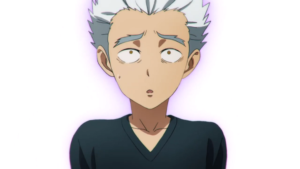
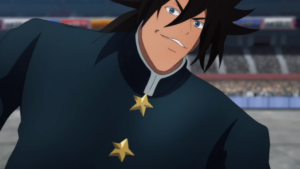
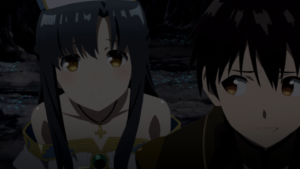
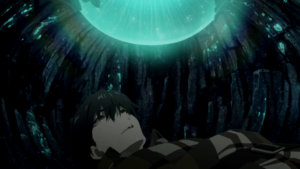
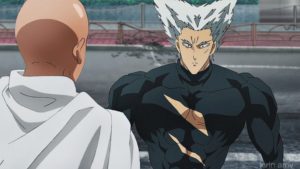
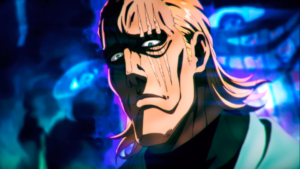
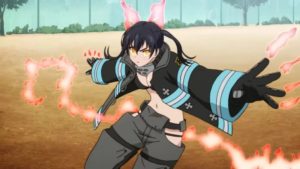
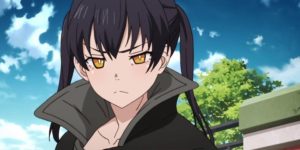
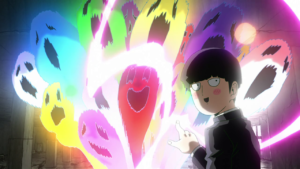
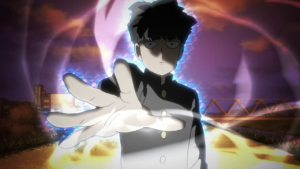
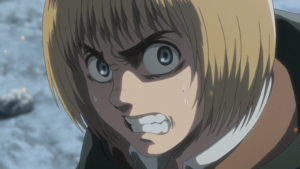
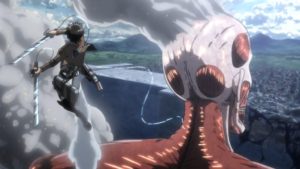
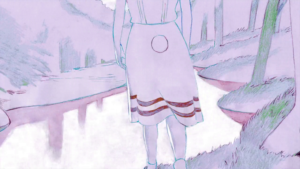
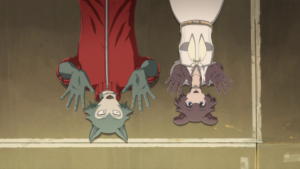
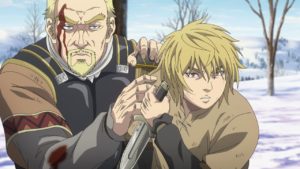
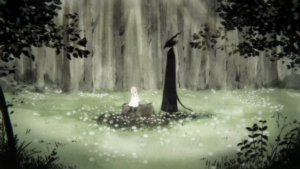
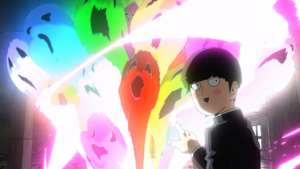
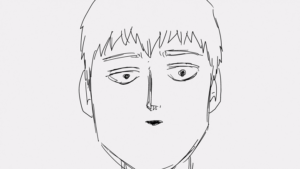
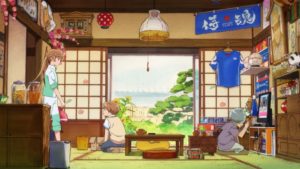
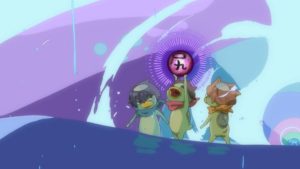
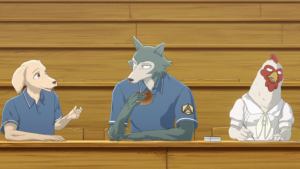
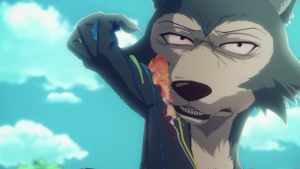

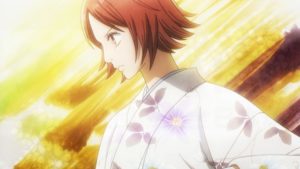
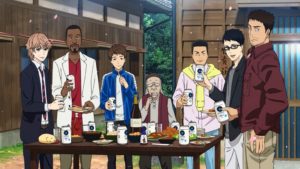
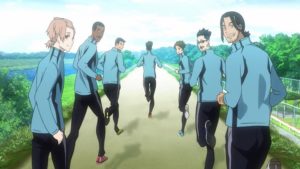
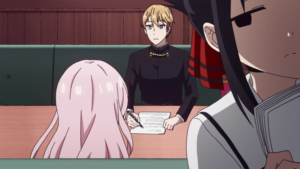
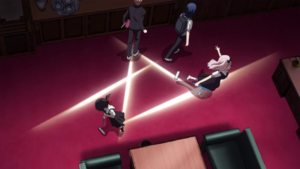
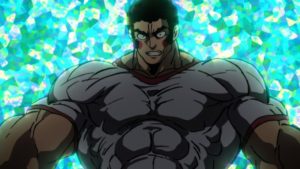
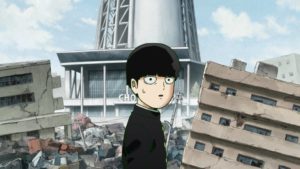
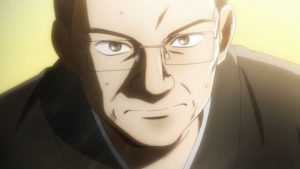
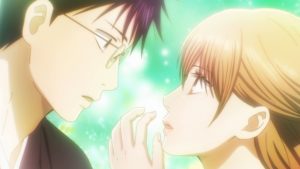
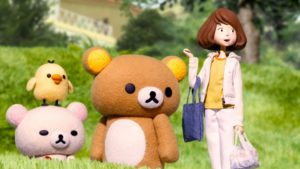
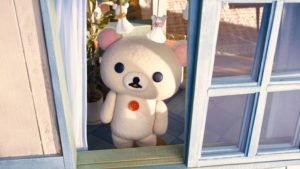
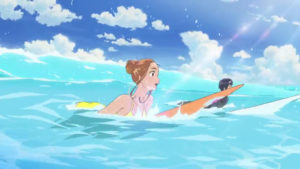
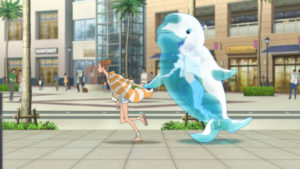
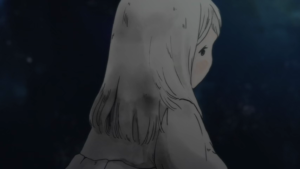
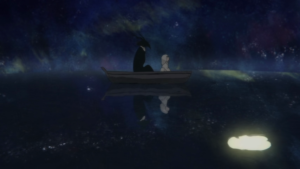
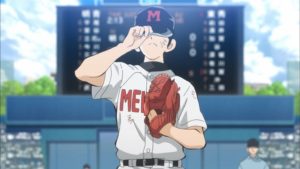
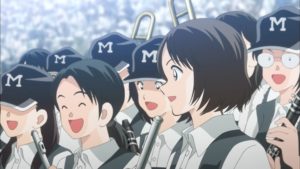
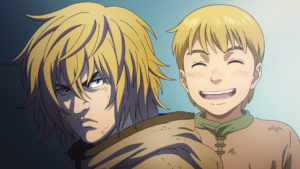
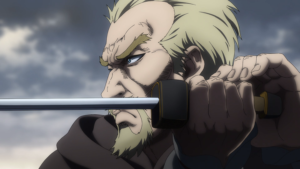

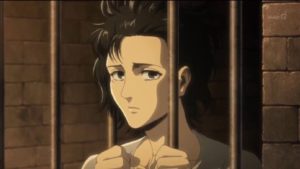
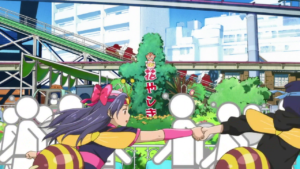
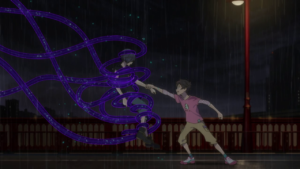
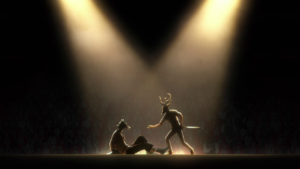
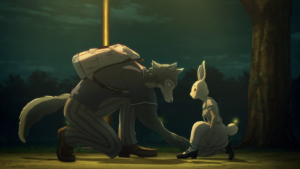
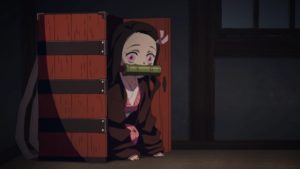

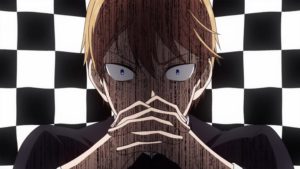

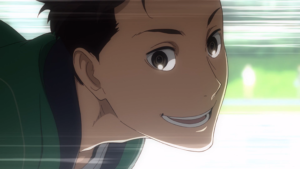
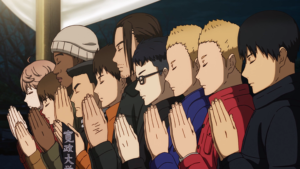
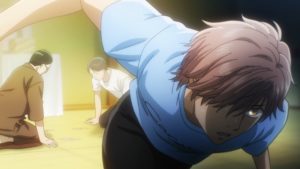
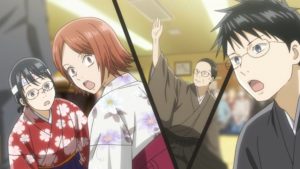
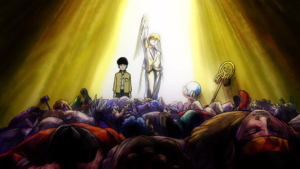
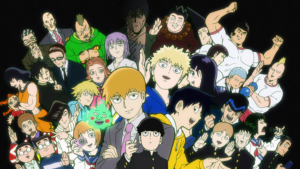
Thanks for doing this you all! It was good year for anime!
Agreed! Thanks for sticking with us through the site migration and all that. Here’s to another decade of anime, and the blogging thereof.
A Suggestion –
It’d be interesting to see what each reviewer rated their ten favorite series on the “individual ballot” page. I’m especially curious about Mario (his tastes mirror mine), but all four would be a great added value.
That info is present on the Google sheet with the ballots. Just scroll down a bit and you’ll see each of our top 15 lists.
I was actually talking about numerical scores (e.g. 91/100). It seems like this would get the most mileage out of four separate reviewers listing their annual favorites. It would also illuminate subtle differences – how Mario rates Beastars vs. Lenlo for instance.
Gotcha. I’m not a big score guy, but I know Mario is. Amun’s recent review of Fire Force revealed an insane grading system, so he probably scores everything, too. Maybe if the others see your comment they’ll chime in with some numbers!
Although I do admit I love scoring/ grading, I found it to be relative in nature. Like 1) what is the real difference between 91/100 to 90/100 for example. And my 91/100 doesn’t hold the same value as Lenlo’s 91/100
Also found it interesting how difference in approach between us when it comes to scoring: Lenlo looks at individual elements, Amun uses positive/ negative spectrum, I merely compare shows (Beastars is just as good as Tsuritama, hence the score for example)
Lastly, as per your request, here’s my scoring for my top 10 shows of 2019:
1) Beastars (91/100)
2) Sarazanmai (91/100)
3) Chihayafuru 3 (yet to grade since it’s just half a season)
4) Mob Psycho 100 II (88/100)
5) Mix (85/100)
The above 5 are 9 MAL score
6) Vinland Saga (84/100)
7) Run with the Wind (83/100)
8) Legend of Galactic Heroes (83/100)
9) Araburu (82/100)
10) Kaguya-sama (82/100)
11) Hi Score Girl II (81/100)
Note: in my own ranking, I only consider shows that debuted in 2019, hence Run with the Wind isn’t on my original top 10.
They are all 8/10 MAL score
Oh, and all I just said doesn’t factor the fact that our opinions about one show change over time as well. So yeah, scoring is not exact science.
Awesome! Thanks Mario.
It just kind of dawned on me: 2019 was a great year wasn’t it? It seemed to get much better and more diverse after a muted start. I’m actually reminded of Fall, 2017 with Made In Abyss, Houseki no Kuni, and Girls’ Last Tour hitting at once.
Also, I agree with the other posters: the intelligence of this site is rare among english-language anime blogs. Keep up the good work, and all the best for 2020.
I second the notion. It is extremly difficult fo find a high brow anime blog. I appreciate you folks for your dedication and hard work.
I had no idea we were such a highbrow publication, but hey, I’ll take it. Thanks for reading.
Movin up in the world my friend!
This was a great read. Thank you!
What would you guys say were the best anime nobody watched? Chihayafuru, machikado mazoku, high score girl S3… etc.
That would be Mix: Meisei Story for me. Not a lot of people seems to watch it.
I’d say the best anime that nobody watched in 2019 is Mix. It’s got a paltry 13K “members” on MAL – far fewer than any of the shows you listed there. The show’s Japanese audience was massive, however.
If you don’t like baseball but you do like stop motion animation, I’d try Rilakkuma and Kaoru on Netflix. Most anime fans I’ve talked to have passed on it solely because it’s not 2D.